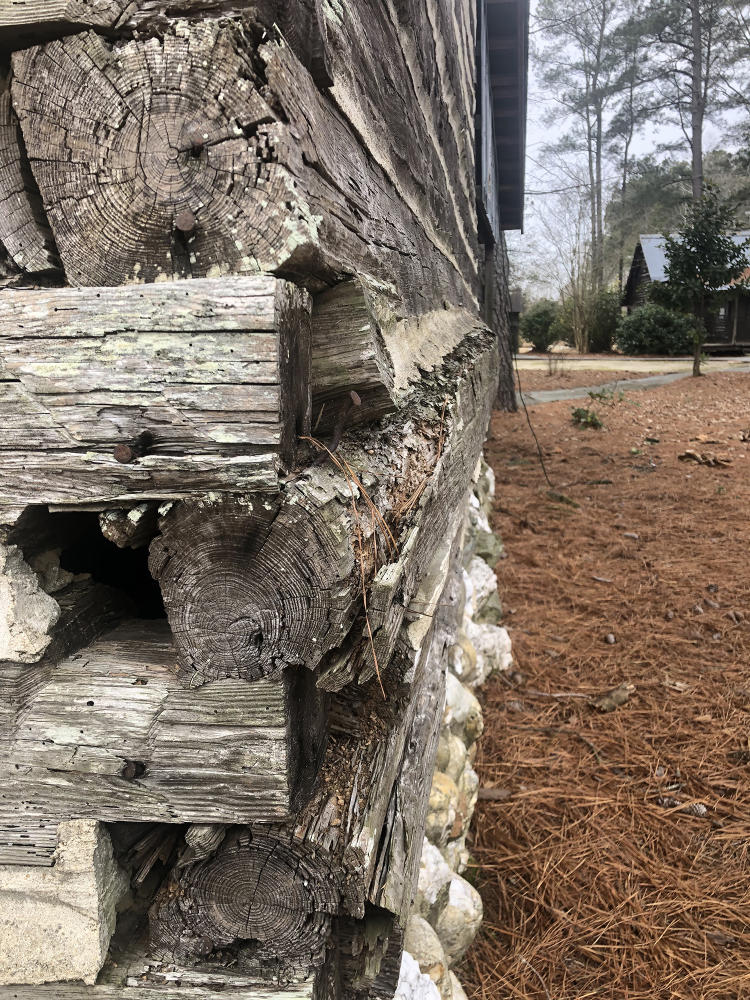Due to the continued support from the public, grants, and the state, the Tobacco Farm Life Museum has grown and persevered even through these last two exceedingly difficult years. However, as the museum’s 40th anniversary approaches in 2023, major repairs are needed to several of the site’s buildings. The danger is most immediate for the historic Tobacco Barn on the property which was moved from the Holland Farm to the grounds in 1988.
“Over the years, weather damage has taken its toll and the structure has slowly started the process of falling off its foundation,” said Melody Worthington, Museum Director. “A scene that has, unfortunately, become all too familiar across the state for similar barns. Because the tobacco barn is over 122-years-old, the process for correcting the damage is going to be intricate.”
The museum staff is currently in communication with experienced log barn restoration teams to assess the extensive project, but the financial aid of the public is going to be necessary to help preserve this at-risk piece of North Carolina’s farming history. The Tobacco Farm Life Museum expects the repairs to be around $100,000, and the process will require temporary, artificial suspension of the barn to support it while deteriorated logs are removed and replaced.
Community support is needed to help preserve the Tobacco Barn through financial donations and the location of replacement logs. It is important that the project gets started as soon as possible to ensure that the barn can be saved.

History of the Holland Farm Tobacco Barn
Farmer Ephraim Atkinson built the barn around 1900 for his farm located in Johnston County. It was built of pine logs, cut and hewn to fit, and then mortised together and chinked or daubed with clay. In the early 1900s tobacco was cured in barns using heat generated in a wood-burning furnace and spread around the barn through the large metal “flues.” Since maintaining proper heat was very important to the process, farmers often slept at the barn to keep the furnace stoked through the night. Later, wood fired barns were made from wood planks, tiles, or cement blocks with some being covered with tar paper for better insulation.
After Ephraim's death his son Harvey inherited the barn in 1937. In the late 1940s Harvey converted the farm to be oil-fired and it continued to be used until 1968. Harvey died in 1965 and left the barn to his heirs. Years later Joey Holland, Ephraim's great-great grandson, purchased the farm from Harvey's heirs and donated it to the museum. In March of 1988 the barn was moved onto the museum site and restored. The restoration included reverting it back to its original wood-fired configuration. The barn was originally located on the Atkinson farm about two-and-a-half miles west of the museum location.
Contact and Giving Info
Members of the public interested in donating to save the tobacco barn can go here; the link goes to a PayPal set-up by the museum. If a community member is aware of a possible source of historically accurate replacement logs for the building, please contact Director Melody Worthington at 919-284-3431. The Tobacco Farm Life Museum is located at 709 N Church Street in Kenly, North Carolina and is open Tuesday-Saturday from 9:30AM to 5:00PM. Learn more at www.tobaccofarmlifemuseum.org.






